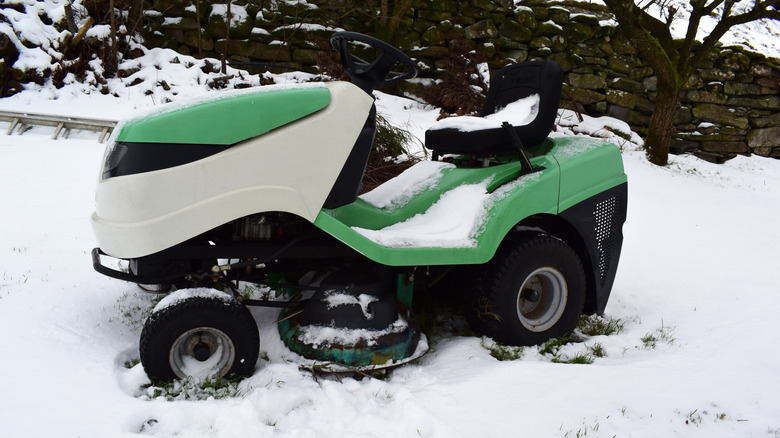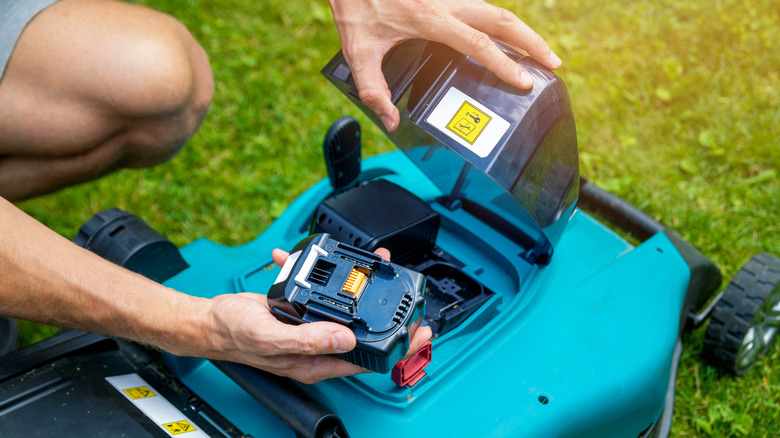Simple Tricks For Protecting Your Lawn Mower Battery As The Weather Gets Colder
We may receive a commission on purchases made from links.
A lawnmower is among the most useful (and expensive) tools a homeowner will ever purchase, so keeping up with its maintenance is important. As cold weather sets in, many people have prepared their lawn for winter with one final mow. Before you stow your battery-powered lawn mower away for the season, though, you should also prepare it — by removing its battery to ensure it lasts throughout the winter.
Like the battery in your car, lawnmower batteries don't do well when they sit idle for too long. Generally, lawnmowers use either lithium-ion batteries or lead-acid batteries. Lithium-ion batteries are known for having faster charging times and a longer life, but once temperatures fall below 32 degrees, their capacity begins to dwindle. While lead-acid batteries are typically more robust, they still aren't immune to cold weather. For example, they may go through a process called sulfation, which refers to a build-up of lead sulfate crystals. These molecules attach themselves to your battery's lead plates and essentially form a coating that prevents it from charging properly.
Winter is troublesome because cold weather can slow down a battery's chemical reactions. In addition to problems like sulfation, your battery may freeze, leak, or even explode. Storing your lawnmower and its battery separately is the best way to avoid these issues. To properly remove a battery, you begin by disconnecting the black wires before moving on to the red. Take your time and follow any manufacturer's guidelines if you run into issues like corrosion. Once removed, you should clean the battery terminals and case with a mix of baking soda and water before placing it into storage.
How to store your battery for maximum protection
Before just putting your battery on a shelf and walking away, there are a few more things you should check. First, your battery needs to be properly charged. If your lawnmower has a lithium-ion battery, it should be around 30-50% charged when stored. Storing one fully charged can damage the battery, and too little charge can degrade it. Lead-acid batteries, on the other hand, should actually be fully charged during storage. To ensure that your batteries remain at correct power levels throughout winter, you can invest in a smart charger like the Mroinge Automatic Battery Charger, which can be purchased for under $30 on Amazon.
Once charging is taken care of, you must find a cool, dry place that is between 40 to 70 degrees Fahrenheit — perhaps a high shelf in your utility room or pantry. Be careful not to place your battery on concrete, as its temperature can rapidly fluctuate (one reason why your garage might not be the best place to store batteries). Instead, opt for storing it on a more stable surface like wood. You should also pick a place that is easy to access so you can check on your battery throughout the winter for any signs of corrosion, leaking, swelling, or other issues. With proper care, you will minimize these risks, but it is still important to double check — batteries exhibiting these symptoms pose a significant fire hazard.

